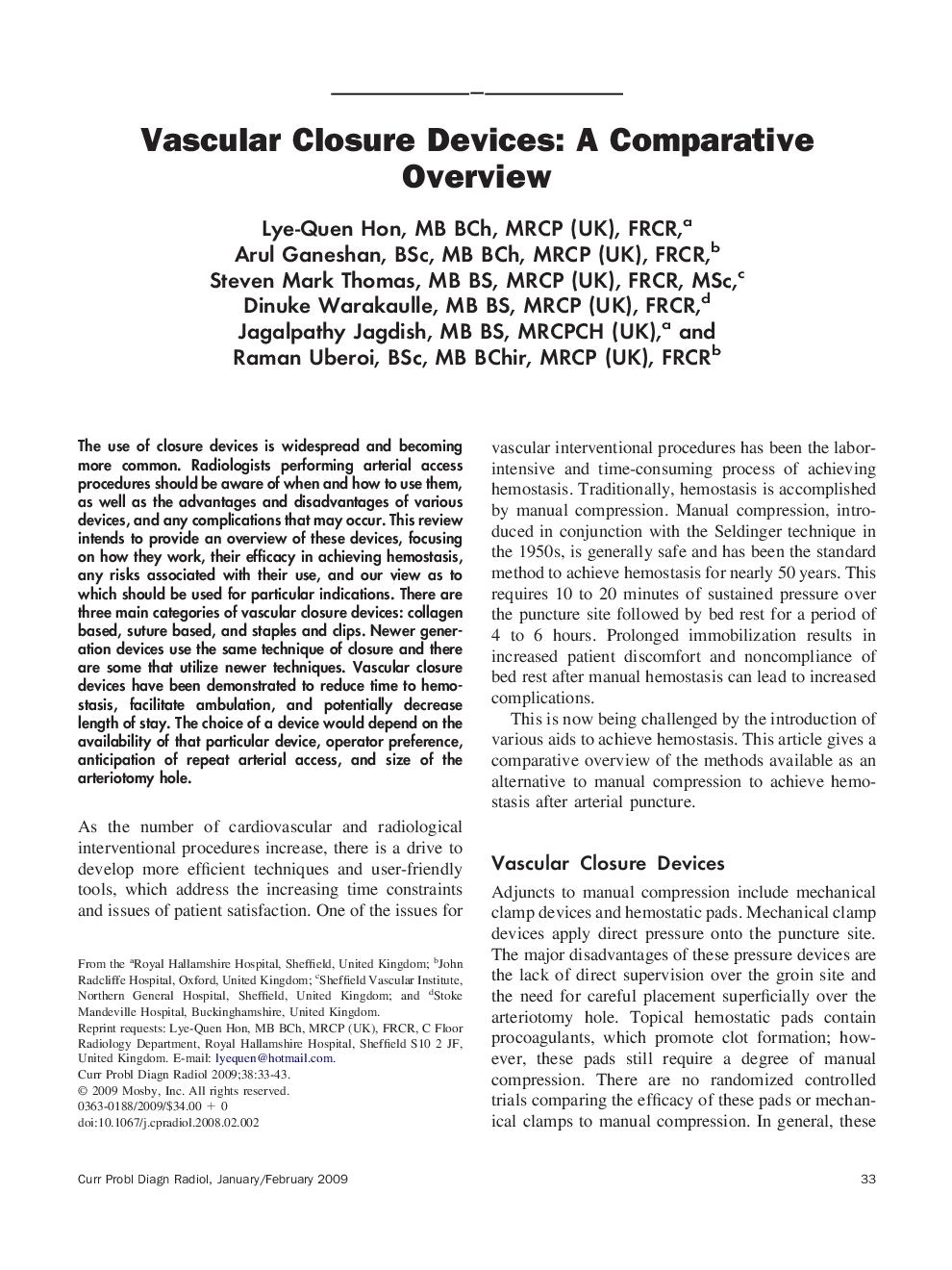| Article ID | Journal | Published Year | Pages | File Type |
|---|---|---|---|---|
| 4223721 | Current Problems in Diagnostic Radiology | 2009 | 11 Pages |
The use of closure devices is widespread and becoming more common. Radiologists performing arterial access procedures should be aware of when and how to use them, as well as the advantages and disadvantages of various devices, and any complications that may occur. This review intends to provide an overview of these devices, focusing on how they work, their efficacy in achieving hemostasis, any risks associated with their use, and our view as to which should be used for particular indications. There are three main categories of vascular closure devices: collagen based, suture based, and staples and clips. Newer generation devices use the same technique of closure and there are some that utilize newer techniques. Vascular closure devices have been demonstrated to reduce time to hemostasis, facilitate ambulation, and potentially decrease length of stay. The choice of a device would depend on the availability of that particular device, operator preference, anticipation of repeat arterial access, and size of the arteriotomy hole.
